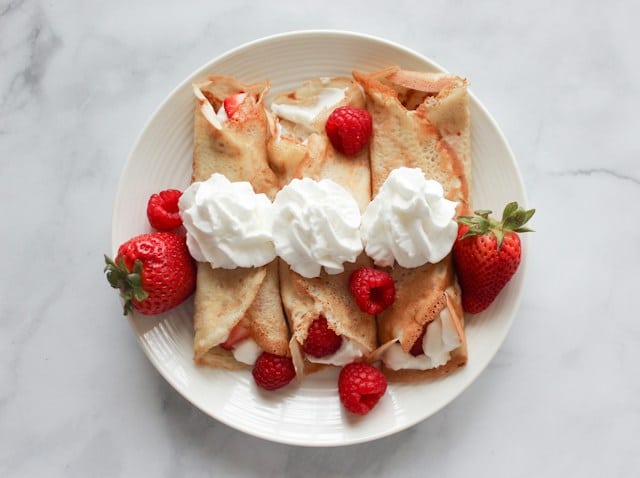When you think of Japanese cuisine, the first things that come to mind might be sushi, ramen or perhaps miso soup. However, Japanese cuisine is not only about umami-rich savory dishes, it also boasts a wide assortment of scrumptious desserts. These sweet treats, often made with ingredients such as rice, red bean paste, matcha green tea, and cream, are as much a delight to the taste buds as they are to the eyes. Let’s explore some of these traditional Japanese desserts and even learn how to make a few at home.
Mochi: The Quintessential Japanese Dessert
Mochi, a popular Japanese sweet, is a traditional dessert that is often enjoyed during New Year’s celebrations. Made from a type of short-grain glutinous rice known as mochigome, this sweet treat has a unique, chewy texture that is both satisfying and delicious.
Cela peut vous intéresser : How to Craft a Gourmet Coffee Experience at Home with Simple Tools?
Mochi is usually filled with red bean paste, a sweet filling made from azuki beans. Its delicate sweetness complements the subtly sweet and slightly sticky mochi, creating a dessert that is simple yet deeply satisfying. To make mochi at home, you will need mochigome rice, red bean paste, and a bit of sugar for sweetness. Once the rice is cooked and pounded into a smooth, sticky dough, it can be shaped into small rounds and filled with the red bean paste.
Matcha Green Tea Desserts: A Taste of Tradition and Innovation
Matcha green tea is a staple in Japanese cuisine, used not only in traditional tea ceremonies but also as a key ingredient in many desserts. Matcha imparts a vibrant green color and a distinctive, slightly bitter taste that beautifully balances the sweetness of desserts.
A lire en complément : How to Craft a Gourmet Espresso Martini with a Unique Twist?
One of the most popular matcha-infused desserts is Matcha Ice Cream. This dessert, with its creamy texture and unique flavor, is a must-try for green tea lovers. You can make it at home with heavy cream, sugar, matcha powder, and egg yolks. Another popular matcha dessert is Matcha Cake, a light, fluffy cake with a subtle matcha flavor.
Anpan: Sweet Bread Filled With Red Bean Paste
Anpan is a type of sweet bread that is a staple in Japanese bakeries. This dessert is made by filling a soft, sweet roll with red bean paste. Anpan was first made in the Meiji era, and its popularity has not waned since.
Making anpan at home can be a fun and rewarding experience. You will need bread flour, yeast, sugar, and butter for the bread, and red bean paste for the filling. The dough is left to rise until it doubles in size, then it is divided into portions, filled with red bean paste, and baked until golden brown.
Dorayaki: A Legendary Sweet Treat
Dorayaki is a traditional Japanese dessert that consists of two small pancakes sandwiched around a filling of red bean paste. This dessert is believed to have been named after a gong, or ‘dora’, due to its distinctive, round shape.
Making dorayaki at home is relatively straightforward. You’ll need flour, sugar, honey, and eggs for the pancakes, and red bean paste for the filling. The pancakes are cooked on a griddle until golden brown, then filled with the sweet, creamy red bean paste.
Traditional Japanese Cookies: Sweet and Elegant
Japanese cookies, known as wagashi, are traditional sweets that are often served with tea. These cookies are known for their elegant shapes and designs, which are often inspired by nature. Some popular types of wagashi include monaka, a wafer cookie filled with red bean paste; higashi, dry sugar candies often served during tea ceremonies; and senbei, rice crackers that can be either sweet or savory.
Making wagashi at home requires a little more artistic skill compared to other Japanese desserts, but the end result is well worth the effort. Ingredients typically include sweet rice flour, sugar, and red bean paste, as well as natural food coloring and edible rice paper for decoration. The cookies are often steamed or baked, and are best enjoyed with a cup of green tea.
Conclusion
In Japanese cuisine, desserts are considered an art form, with great care and attention given to both taste and appearance. Whether it’s the chewy texture of mochi, the earthy flavor of matcha, the sweet filling of anpan, the fluffy pancakes of dorayaki, or the exquisite designs of wagashi, these traditional Japanese desserts offer a unique and delightful culinary experience.
Japanese Cheesecake: A Light and Fluffy Delight
Japanese cheesecake has earned a reputation for being nothing short of heavenly. Unlike the dense and rich traditional Western cheesecake, the Japanese version is light, fluffy, and less sweet, making it a favorite among those who prefer subtler desserts.
The secret to its cloud-like texture is in the way the eggs are incorporated. The yolks and whites are separated, and the whites are beaten to a meringue before being folded into the batter. This process, along with the addition of cornstarch, gives the cheesecake its characteristic fluffiness.
Making Japanese cheesecake at home can seem daunting, but with a bit of patience and precision, it can be an enjoyable experience. The ingredients are straightforward: cream cheese, milk, butter, sugar, eggs, and cornstarch. A water bath is also essential during baking to ensure the cheesecake doesn’t dry out and maintains its soft texture.
Soufflé Pancakes: A Popular Japanese Breakfast Treat
Japanese soufflé pancakes are a must-try breakfast treat that can easily double as a dessert. These pancakes are incredibly fluffy, jiggly, and about three times thicker than regular pancakes.
Just like Japanese cheesecake, the fluffiness of these pancakes is achieved by beating the egg whites into a meringue before incorporating them into the batter. This makes the pancakes rise significantly during cooking, creating a light and airy texture that is simply irresistible.
To make Japanese soufflé pancakes at home, you’ll need flour, sugar, milk, vanilla extract, and eggs. The key is to cook them on low heat with a lid on, allowing them to rise slowly and evenly. Serve these pancakes with a dusting of powdered sugar, a dollop of whipped cream, or a drizzle of syrup for a delightful breakfast or dessert.
Conclusion
Ranging from the subtly sweet mochi and anpan, the delightful earthiness of matcha desserts, the fluffy dorayaki pancakes, and the artistic wagashi cookies, to the light and airy Japanese cheesecake and soufflé pancakes, traditional Japanese desserts offer an array of flavors and textures that cater to different tastes. They represent a rich cultural heritage that values balance, simplicity, and a respect for ingredients. Whether you’re exploring these treats at a Japanese bakery, enjoying them at a traditional tea ceremony, or making them at home, they’re sure to provide a uniquely satisfying and memorable experience. So next time you’re in the mood for something sweet, why not try your hand at one of these traditional Japanese desserts? After all, nothing beats a homemade sweet treat that not only satisfies your sweet tooth but also transports you to the land of the rising sun.











